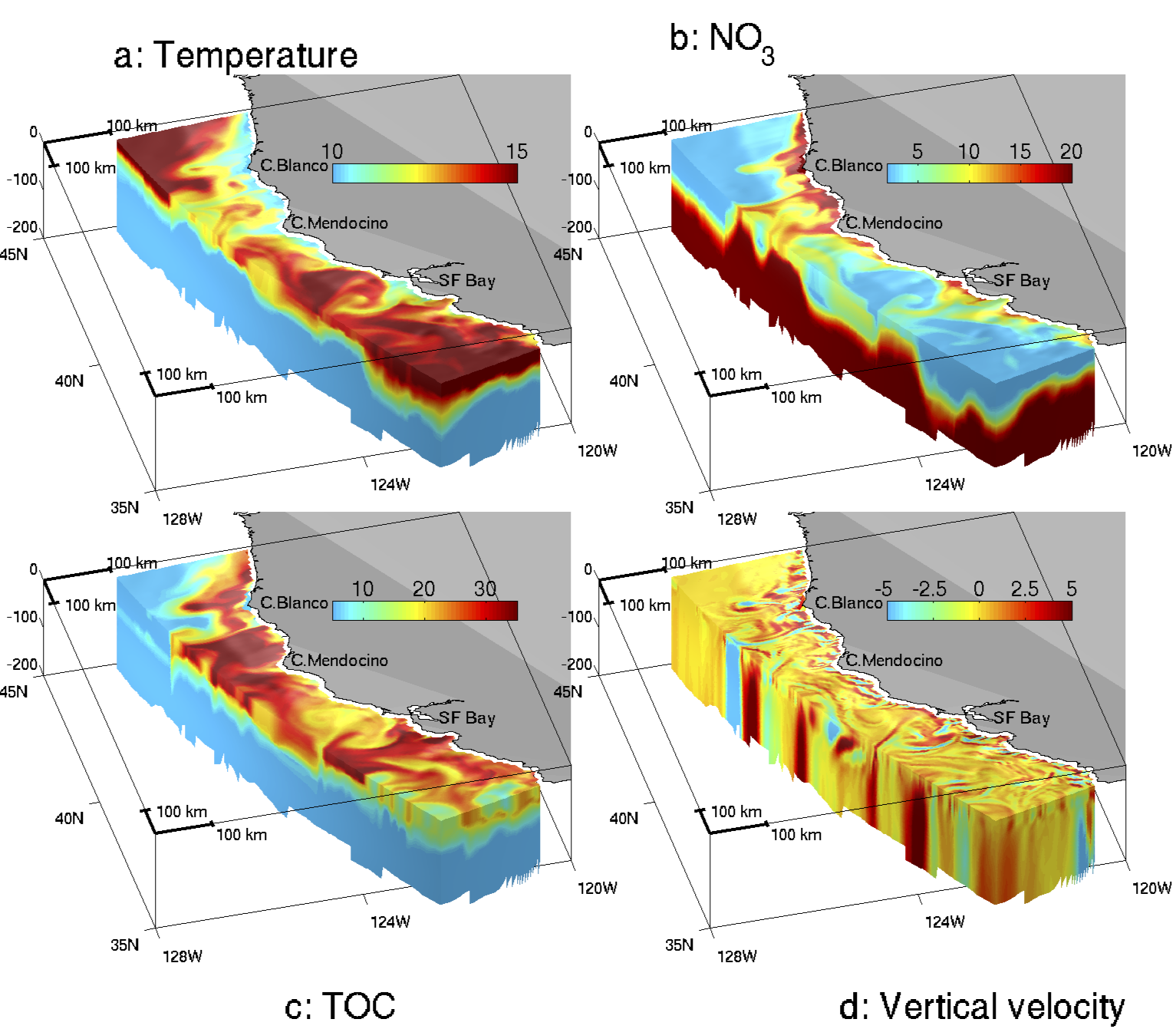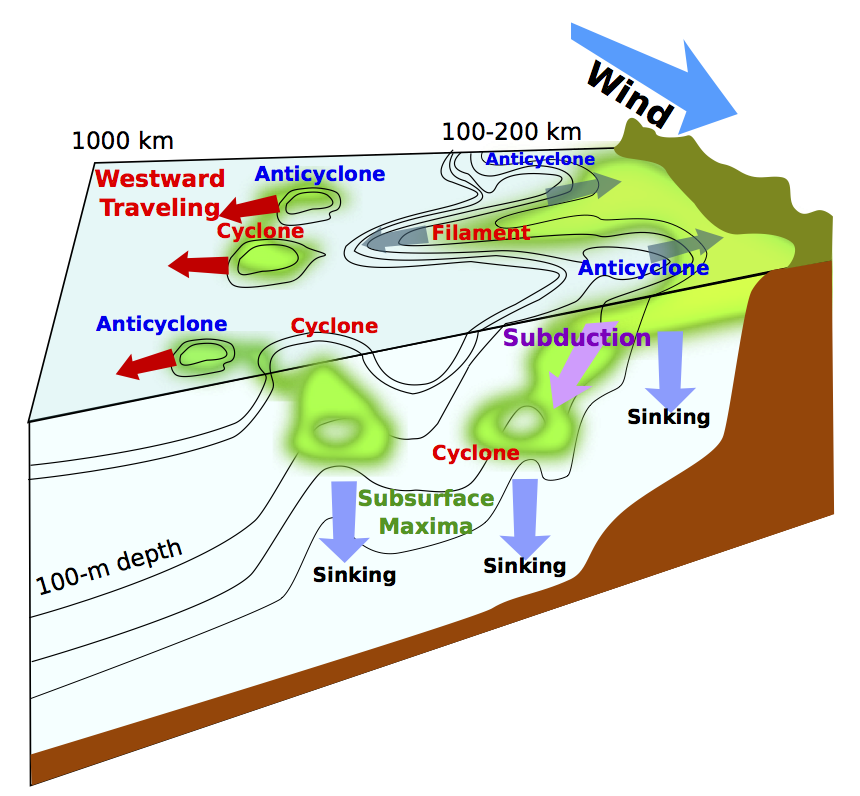Swirling currents called ocean eddies

Ocean eddies transport nutrients and carbon offshore and downward
The California Current System is one of the most famous coastal upwelling zones in the world. Since many oceanographic institutes and universities are located on the West Coast of the United States, much research has been conducted on the coastal upwelling in this area. Coastal upwelling occurs when equatorward winds blow continuously along the eastern coast of the ocean basin.
This is due to the offshore sea water transport associated with the equatorward winds. Because of the presence of shorelines along the eastern coast of the ocean basin (California), cold seawater rises from the subsurface to compensate for the surface offshore transport. This results in a cool sea breeze blowing in the coastal areas from the ocean. On the other hand, a little further inland, the climate turns hot and dry like a desert. The supply of seawater from the subsurface layer to the surface layer during the coastal upwelling also transports high nutrient water from the subsurface layer to the sunlit layer near the surface layer. This makes the coastal upwelling area an area of active biological production.

Because of active biological production, carbon as organic matter is produced in large quantities in the surface layer of coastal upwelling areas. Therefore, coastal upwelling areas are thought to play a very important role in the oceanic carbon cycle, which is thought to be important for climate change. In particular, how the organic carbon produced in coastal upwelling areas is transported offshore is a very important research issue, and has been the subject of active research to date. The problem is that coastal upwelling brings cold seawater up to the coastal zone, where it forms a front with the surrounding seawater. Bordered by that front, the California Current flows in a southerly direction, and it was not known how carbon and other materials are transported across that front.
Therefore, this study used the University of Illinois supercomputer and the UCLA Physical Ocean Ecosystem Model to investigate in detail what mechanisms cause the offshore transport of carbon and nutrients. The results revealed that the coastal upwelling front meanders and forms filaments, and that these filaments generate cold water eddies at their offshore edges, which propagate westward as Rossby waves, effectively transporting carbon and nutrients offshore.
In addition to the offshore transport, most of the upwelling nutrients settle at the front before being used for photosynthesis, and the more active the eddy, the greater the sinking, which is contrary to the conventional theory that eddy activity results in the blockage of biological production in coastal upwelling areas. These results were published in the renowned scientific journal Nature Geoscience and in the prestigious Journal of Gephysical Research.
Gruber N., Z. Lachkar, H. Frenzel, P. Marchesiello, M. Münnich, J. C. McWilliams, T. Nagai, G-K. Plattner, Eddy-induced reduction of biological production in eastern boundary upwelling systems, Nature, Geoscience, 4, 787-792, 2011
Nagai, T., N. Gruber, H. Frenzel, Z. Lachkar, J. C. McWilliams, G-K Plattner, Dominant Role of Eddies and Filaments in the Offshore Transport of Carbon and Nutrients in the California Current System, J. Gephys. Res., Accepted.